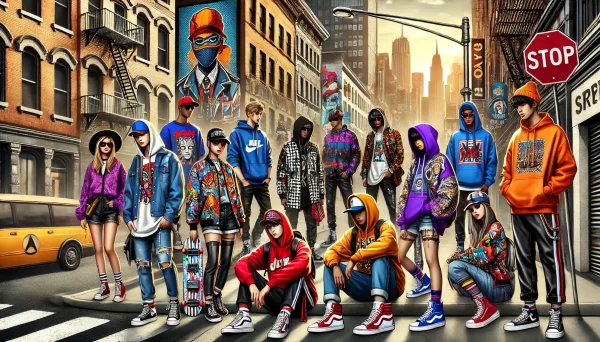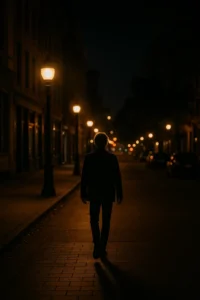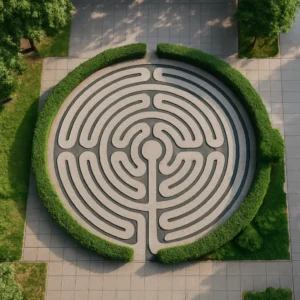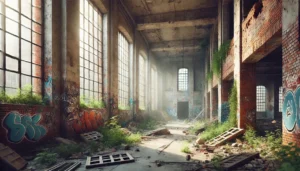Urban culture and fashion have always walked hand in hand, evolving together on the streets of the world’s major cities. From hip-hop and skateboarding scenes in New York and Los Angeles to the underground punk and techno subcultures of London and Berlin, the streets have become the birthplace of trends that eventually reach high-end runways. Urban culture doesn’t just influence fashion—it is fashion. It reflects the pulse of the city, the voice of the youth, and the ever-changing face of identity, resistance, and creativity.
Streetwear: From Subculture to Mainstream
Streetwear is one of the most iconic outcomes of urban culture. Born from a mix of skateboarding, hip-hop, graffiti, and sportswear, brands like Supreme, Stüssy, and A Bathing Ape started out as niche labels and evolved into global fashion powerhouses. Oversized hoodies, graphic tees, sneakers, and snapbacks once associated with underground movements are now worn by celebrities, influencers, and even featured in luxury fashion shows. The appeal? Streetwear represents authenticity, community, and attitude.
Hip-Hop’s Lasting Legacy
Hip-hop culture has had a massive impact on how people dress worldwide. In the 1980s and 1990s, rap artists like Run-D.M.C. made Adidas sneakers and gold chains iconic. Tupac’s bandanas and baggy jeans, Notorious B.I.G.’s Coogi sweaters, and Missy Elliott’s futuristic looks helped define fashion for a generation. Today, artists like Kanye West, A$AP Rocky, and Cardi B continue to shape the industry—bridging the gap between street style and designer fashion.
Skate Culture and Its Effortless Cool
Skateboarding fashion emerged from Southern California’s skate parks, combining comfort, durability, and rebellion. Loose jeans, flannel shirts, Vans sneakers, and beanies became staples. Skate brands like Thrasher and Palace made their way from the ramps to the runways. What sets skate fashion apart is its resistance to conformity—skaters dress for function, not approval, and that authenticity has become a global fashion statement.
Punk and DIY Aesthetics
Urban punk scenes from London to New York brought an aggressive, anti-establishment style to the streets. Ripped clothes, safety pins, leather jackets, and studded accessories weren’t just fashion—they were protest. The punk look was intentionally raw, often handmade or altered to reject consumerism. This DIY spirit still influences fashion today, seen in distressed denim, patchwork trends, and upcycled pieces.
Afro-Urban Influence and Cultural Expression
Cities like Lagos, Johannesburg, and São Paulo are producing vibrant Afro-urban fashion movements that blend tradition with streetwear. Bold prints, layered jewelry, head wraps, and expressive tailoring reflect cultural pride and modern identity. In cities with large African diasporas, such as London and Paris, Afro-urban fashion is becoming more visible, influencing major fashion houses and street brands alike.
K-Pop and Asian Urban Trends
The rise of K-pop has turned South Korea—particularly Seoul—into a global fashion influencer. Urban fashion here blends street style with futuristic, gender-fluid, and highly curated aesthetics. Oversized blazers, colorful hair, platform sneakers, and cross-body bags are part of a new wave of East Asian street fashion that has taken over both social media and international runways.
Graffiti, Art, and Fashion Crossovers
Urban art, especially graffiti and muralism, has merged with fashion in powerful ways. Artists like Jean-Michel Basquiat and Keith Haring inspired collections decades ago, and today, brands collaborate directly with street artists. Limited-edition drops featuring bold prints, tags, and protest messages reflect how visual urban expression fuels wearable identity.
Sustainability and Urban Thrifting
A newer trend in urban fashion is the return to thrifting and vintage styles. Influenced by both necessity and environmental awareness, urban youth are turning secondhand clothes into fashion statements. Thrifted denim, old-school jackets, and customized pieces showcase individuality while pushing back against fast fashion. Thrift stores, flea markets, and street stalls are the new catwalks of urban style.
Conclusion: The City as a Runway
Urban culture continues to shape the future of fashion—not through polished studios or elite ateliers, but in the real world, where creativity collides with identity. The streets are laboratories for expression, rebellion, and reinvention. From sneakers to slogans, what starts in the city often ends up changing global fashion. As long as people gather, express, and innovate in urban spaces, fashion will continue to evolve—loud, proud, and unapologetically street.







